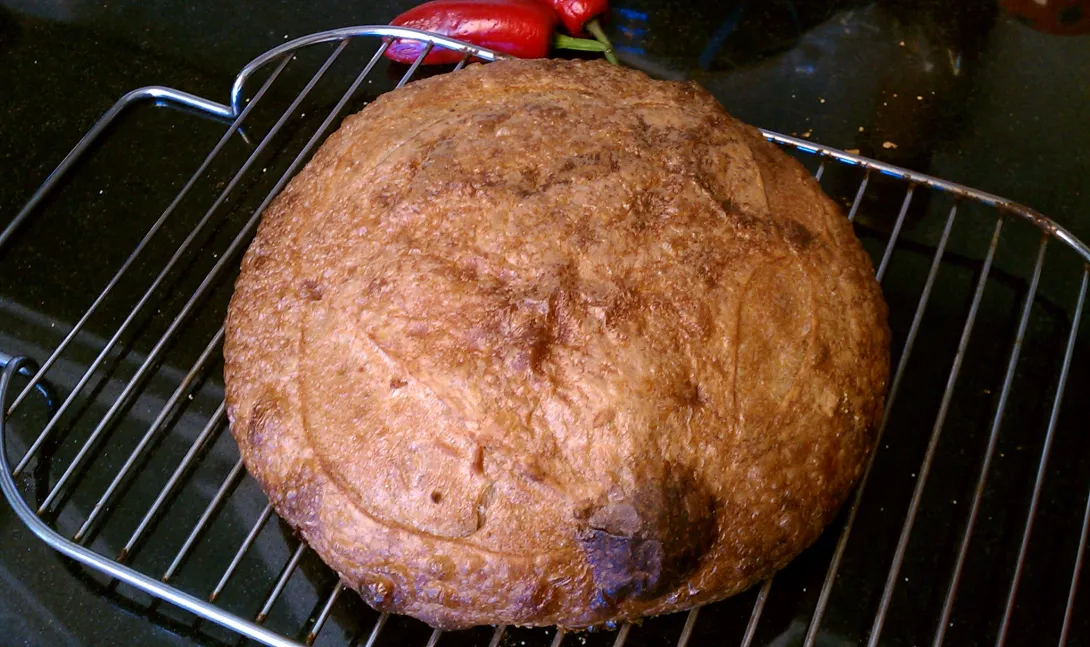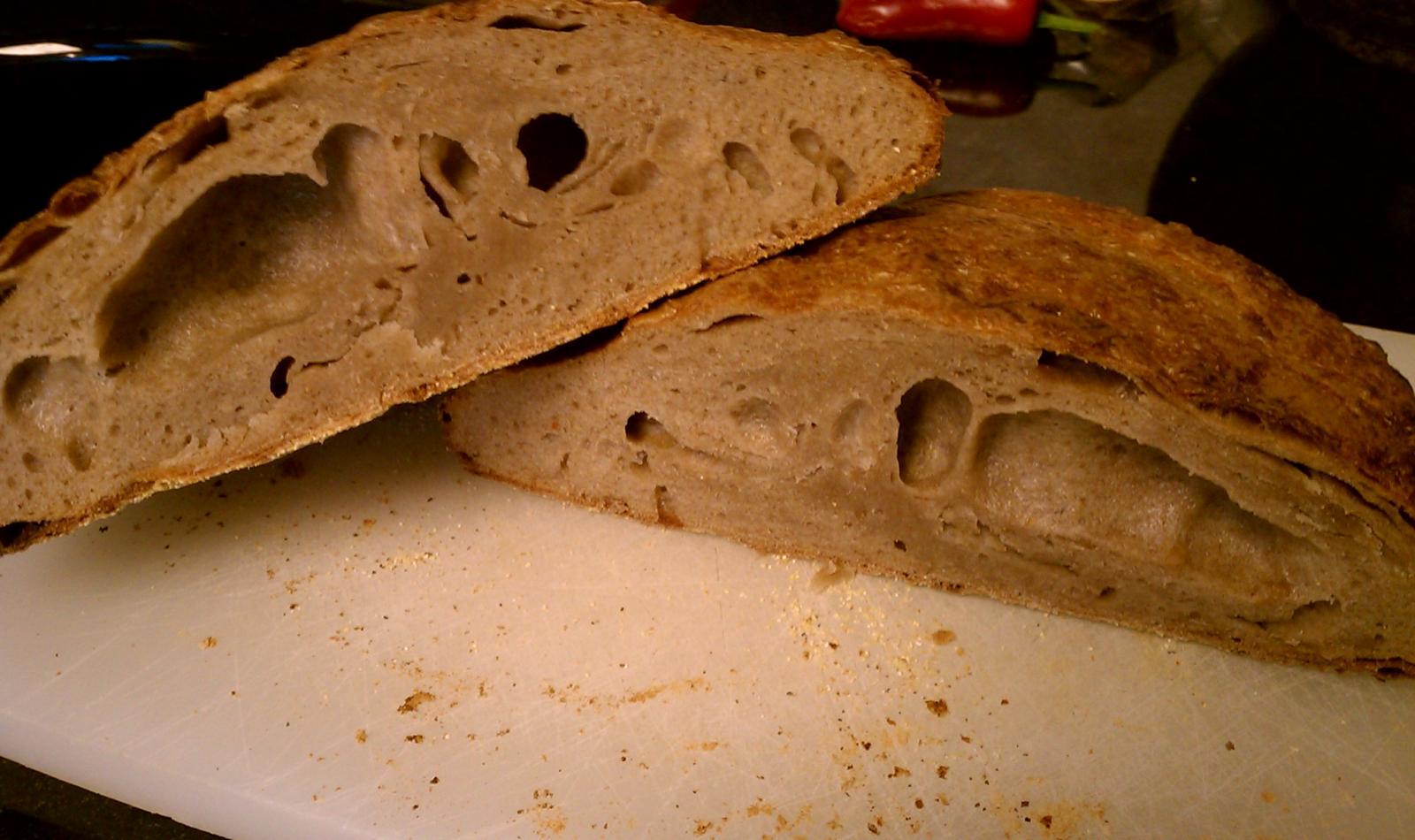
And how!
50% sprouted wheat (commercial) and 50% BF, 80% hydration, 20% starter (100% hydration), 2% salt, 12% sprouted grain. 40 minute autolyse (flours and water only), slap and folds x 6, 1 and 1 minutes, then 3 sets of stretch and folds at 20-30 minutes apart. The dough was beautiful, smooth, supple, elastic.
Covered and into the refrigerator for the night, where it rose maybe 50%. Pulled it out and cranked the oven to the max (500 F+) to preheat while I preshaped, then shaped a tight boule.
An hour later, it had relaxed a bit rather than rising, so I slashed a few cuts and into the oven to steam under my Le Cloche lid for 20 minutes, then 20 more at 450 F.
It did color. It did blister. It did seem to be fully baked. I was hopeful. But the crisp crust began to soften...
Several hours later, I cut it open to find cavernous holes and dense, gummy crumb (which may not even qualify as crumb). Yuck. And into the trash it went.

Disappointed, but not giving up. Will tackle this again soon, but first will read more and revise my formula and procedure, listen to the advice and voices of experience.
Cathy
- nmygarden's Blog
- Log in or register to post comments
100% sprouted whole wheat? One thing that stood out for me was the speed, and this phrase, 'the "rules" for artisan breads, such as using pre-ferments and long, slow rising times, are unnecessary.' Maybe he meant, shouldn't be used. It looks to me like the gluten broke down in your bread. If it was my experiment, I'd dump the over night refrigeration, in an attempt to solve the problem. Maybe try Reinhart's procedure more closely. It's perhaps notable that he didn't use sourdough.
Thanks, Ken, for your suggestions. I was aware of the speed issue, all those enzymes activated, can hardly imagine using 100% sprouted flour, except there are the pictures for evidence. But it was late and I took a chance on a 12 hour overnight chill. I think you're right, the gluten was destroyed. The holes are probably my bad as I shaped. Thinking back, the dough that had felt so alive the night before felt more like play-dough in the morning. I figured it was just cold, but the damage had been done.
I would like to use sourdough and can plan it for a time when I won't need to overnight, so may also take a step back and try a lower % of sprouted flour until I really understand the dynamics and trade-offs. Give up? Not this girl.
I'm not sure it would have improved the outcome this time ,but it certainly wouldn't have been hard to accomplish at the time and would have enabled a quicker transfer to a hot oven.
Thanks for your thoughts and support.
experiments of late using SD, point to the same thing. To get a 12 hour shaped retard in the fridge, you want to limit the sprouted grains to 20% of the total flour, 9% preferment while skipping the autolyse and bulk ferment on the counter entirely. You can allow the dough to warm up on the counter as the oven heats up for an hour maybe a little more. Even this pushed the dough to the limit. Here is my post on the latest attempt. Multigrain SD Sprouted 2 Ways
If you are using such a large commercial yeast preferment you want to follow PR's fast counter recipe if you don't want the dough to turn to goo.
Happy sprouted baking
I've been watching your progress and hearing about the challenges you've faced... but your bread always seems to work out beautifully despite them. I didn't ignore the lessons, but did jump in way over my head, and paid the price.
I will read more carefully and make more informed judgments this next time. No more goo!
Thank you for your comments - much appreciated.
Cathy